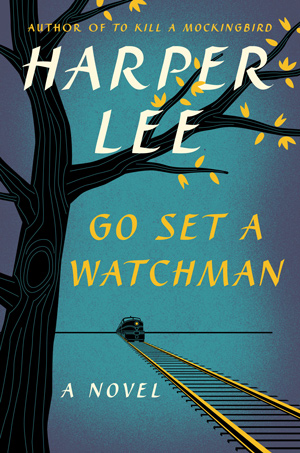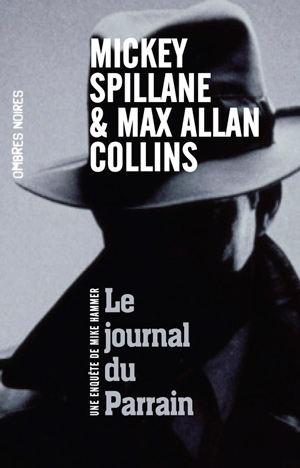
I was a junior and then senior in high school in 1964, when Beatlemania hit, and I was as caught up in it as anybody. The recent anniversary of their Shea Stadium concert got a lot of nostalgic talk going, particularly on oldies radio. (Not that someone as hip and culturally relevant as me listens to such a thing.) What hardly anybody discusses, though, is where the concurrent spy craze fit in.
Of course, James Bond – his anti-Beatles remark in the otherwise great GOLDFINGER a rare tin-ear moment from the filmmakers – was a big part of the British invasion. The success of the first few Bond films meant imitations were inevitable, and lots of spy stuff hit the screens, some of it more straight like THE SPY WHO CAME IN FROM THE COLD and THE IPCRESS FILE, but a lot of it crapola like the Dean Martin “Matt Helm” abominations.
A ton of the imitations came out of Europe, particularly Italy, and those mostly terrible movies – for which I have an inexplicable fondness – are now lumped together as the Euro-Spy genre. The two OSS 117 parodies of recent years were takes on Bond, yes, but also on the straight OSS 117 movies from the ‘60s based on a long-running novel series that actually pre-dated James Bond. Some of these are among the best Bond imitations – SHADOW OF EVIL, MISSION FOR A KILLER, PANIC IN BANGKOK. (These are either unavailable in the USA or available only gray-market and/or pan-and-scan form. Check out Amazon France for better copies, most of which have English subtitles.)
But in Iowa in 1964, only the really mainstream spy movies made it here (again, the Dean Martin junk, and the very good Harry Palmers with Michael Caine) and that was true for a lot of the country. Buffs for this stuff wouldn’t see the Euro-spy movies until they hit TV a decade or two later in butchered, horrendously dubbed format, or in the last few years as DVDs and Blu-rays, often with wide-screen images intact and English subtitles. I particularly like the Joe Walker/KOMMISAR X series from Italy, but there’s no excuse for it.
Meanwhile, back in ‘64, television stepped in to feed a spy craze that couldn’t breathe on one Bond film a year and occasional double-feature double-oh-seven re-releases. So a number of spy series hit the small screen, most prominently THE MAN FROM U.N.C.L.E. (co-created by Ian Fleming, a fairly little known fact) and I SPY. I’ve revisited both series in the last several years, and neither holds up very well. Of course, I SPY is now on the pop-cultural scrap heap, thanks to Bill Cosby’s little hobby.
THE MAN FROM U.N.C.L.E. was always spotty. A few years ago, working my way through the show in a spy’s briefcase, I knew I was in trouble when late in the first season – generally considered to be the best – an episode written by the great Robert Towne blew chunks. But at the time, the show was a very big deal. The first episode was expanded, shown in color (the pilot had been shot that way but the first season was otherwise in black-and-white, and the pilot aired that way), and some new violent, sexy scenes were inserted. Also a big scene with David McCullum, who was a non-entity in the pilot but had Spock-like popularity with viewers that got him the second lead, very quickly. This cunning patchwork was titled TO TRAP A SPY and was released theatrically to some success. There were seven more of these recycled MAN FROM U.N.C.L.E. movies, mostly utilizing TV two-parters, although only the first two did well, and several went overseas with no stateside theatrical release. They are available as a set on DVD from Warner Archive.
Though Bond was obviously immune, the spy craze died quickly, particularly on TV. THE MAN FROM U.N.C.L.E., in its third season, went campy, following the lead of the new craze, the Adam West/Burt Ward BATMAN. Everybody hated this version of U.N.C.L.E., and the next half-season (they were cancelled midway) went back to more straight fare, too late. I SPY lasted three seasons. MISSION: IMPOSSIBLE, thanks to great music and a cool premise, out-lived every other espionage show of the era.
What most Baby Boomers remember about THE MAN FROM U.N.C.L.E. (and U.N.C.L.E. was not Uncle Sam, but an organization that seemed vaguely tied to the U.N. for worldwide law-enforcement) (no, I won’t spell out the acronym) are Robert Vaughn as Napoleon Solo (a name Fleming contributed) and David McCallum as Illya Kuryakin. The latter with his Beatle-esque haircut and understated Russian accent was a big pop-cultural deal. Vaughn, smooth and unruffled and impeccably attired, was arguably the best secret agent of the craze but for Bond himself.
So you’re waiting for me to slam the new movie, I suppose. Well, I’m not going to because it’s terrific. Director-co-writer Guy Ritchie has made a sly, darkly funny film that invokes not just the series but Bond and the entire spy craze era, with the look of the film drawing heavily upon the Harry Palmer trio. The twisty script is sexy and clever and occasionally scary. The music is witty and mixes zither exoticism out of FUNERAL IN BERLIN with Ennio Morricone cues, during which the direction takes an overtly Serio Leone take. The leads are fine, Armie Hammer redeeming his LONE RANGER travesty with a Kuryakin reworked into a volatile near psychotic, while Henry Clavill channels Robert Vaughn. It was this near impression – revealing the actor had really studied the series – that won me over early on. Clavill has Vaughn’s cadence and cool, as well as the dimple in his chin.
It’s an origin story, and U.N.C.L.E. itself is barely introduced at the end, though charmingly so, Hugh Grant nailing the spy agency’s boss, Alexander Waverly (the great Leo G. Carroll on the TV series). It sets up a series of films that probably won’t happen. Unfortunately.
Something this smart and witty may not work on the current generation, who won’t get the references and will wonder why every scene isn’t an action one, like the latest video game or the new MISSION: IMPOSSIBLE. Now I liked the Tom Cruise film, found it great fun, but it’s just one Cruise action set piece after another linked by clumsy expository scenes and winning comedy relief from Simon Pegg. THE MAN FROM U.N.C.L.E. won’t be everybody’s cup of spy, but it’s my favorite film of the summer.
Here’s a knock-out of a review of KING OF THE WEEDS from the Crime Review site.
And my 1981 Nolan novel, HUSH MONEY, made number two on the best reads of the month at Col’s Criminal Library.
M.A.C.


